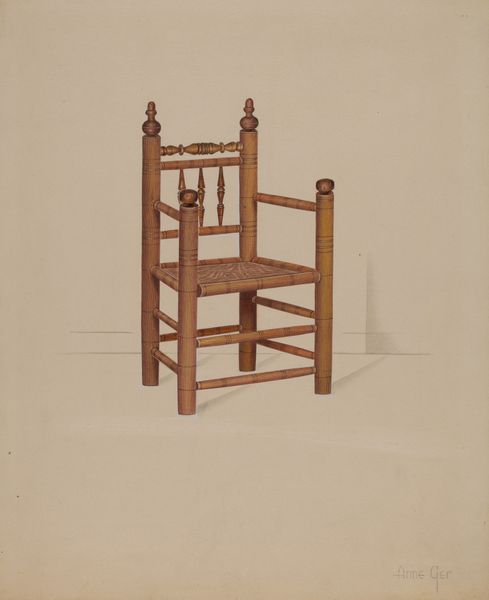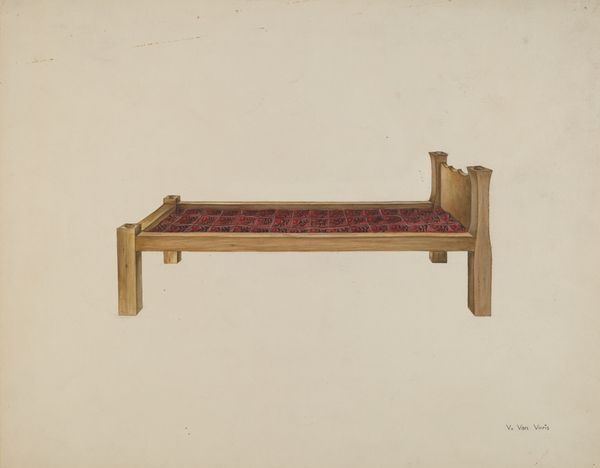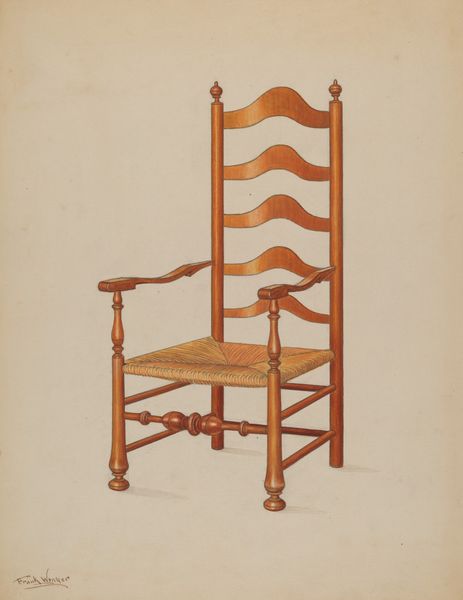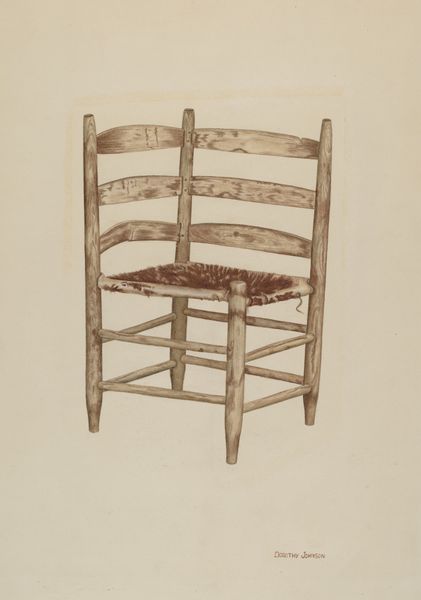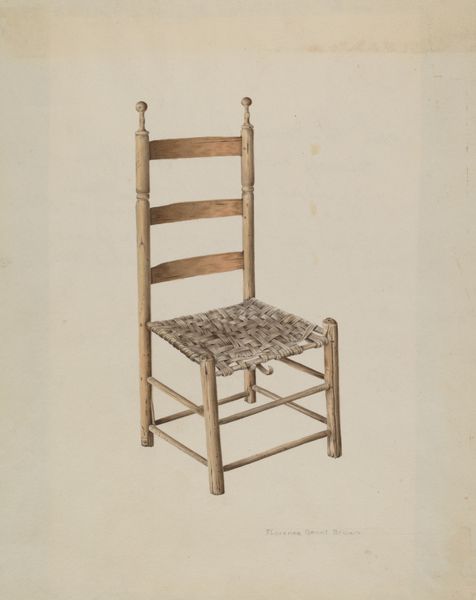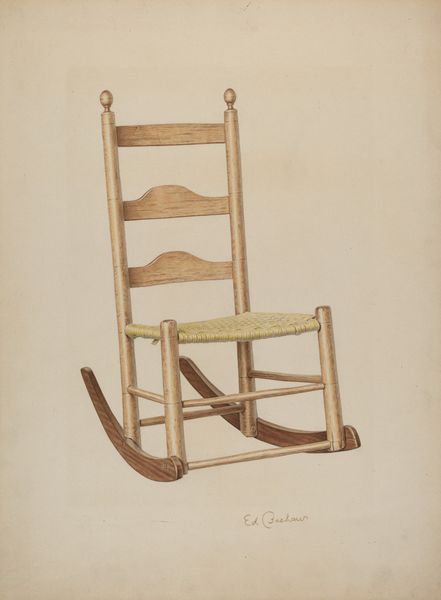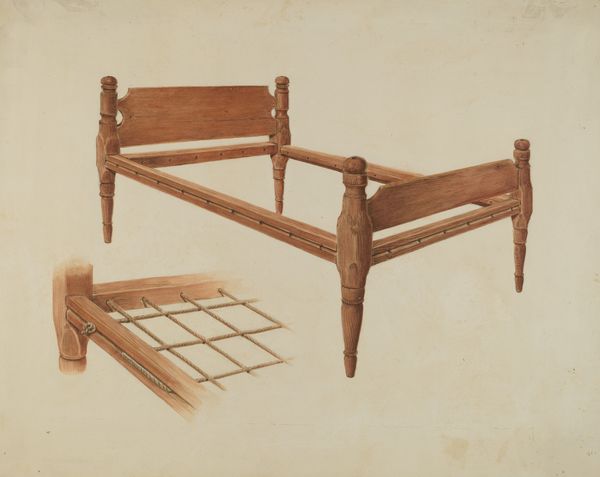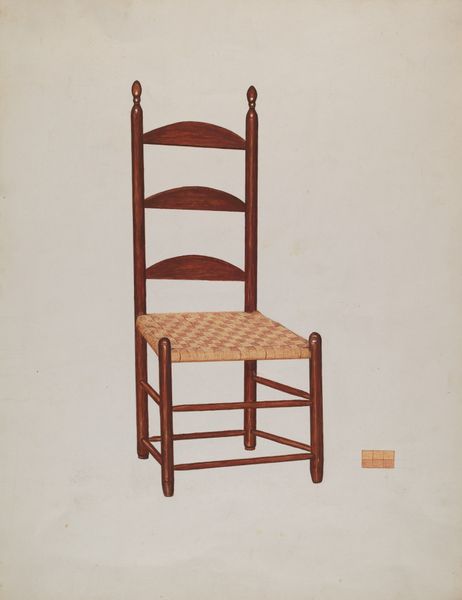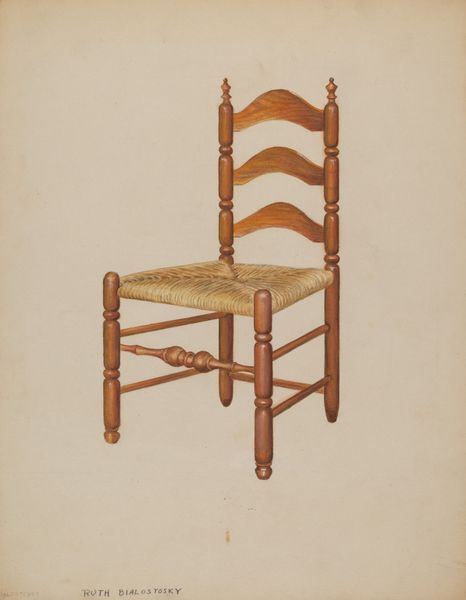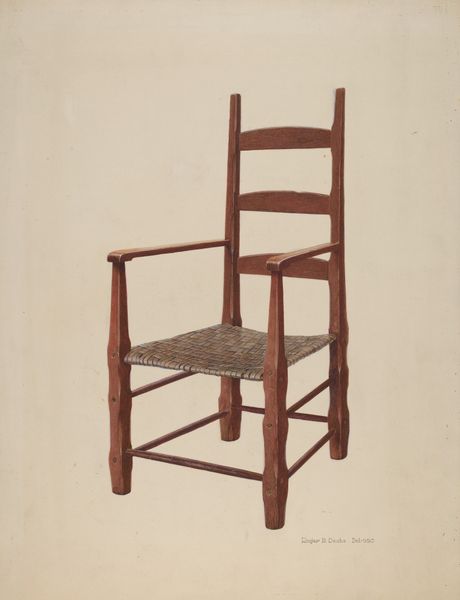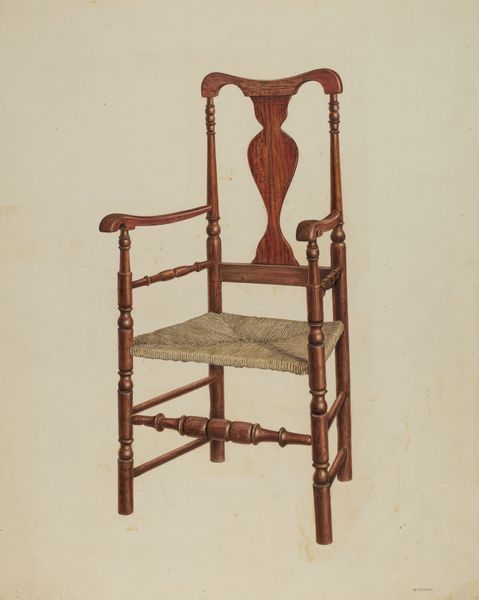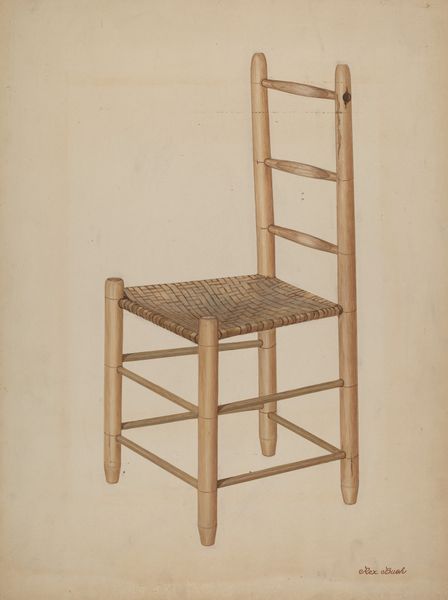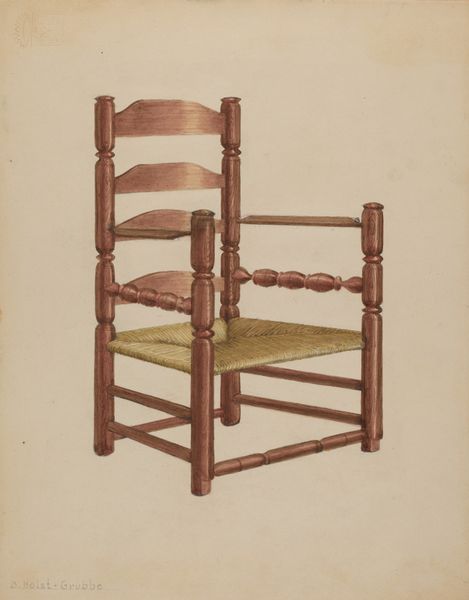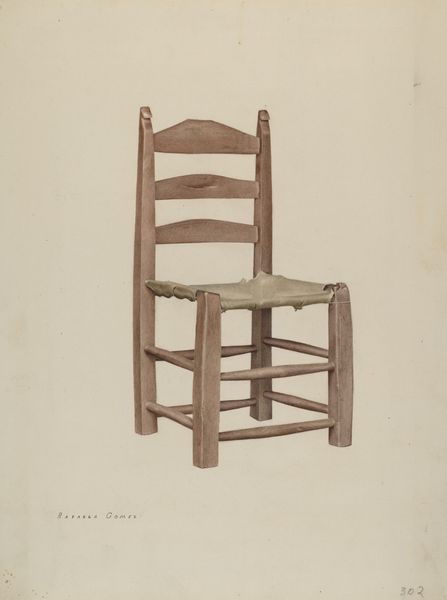
drawing, painting, watercolor
#
drawing
#
painting
#
watercolor
#
realism
Dimensions: overall: 40.5 x 51.3 cm (15 15/16 x 20 3/16 in.) Original IAD Object: 32"high; 38"long; 15"wide seat.
Copyright: National Gallery of Art: CC0 1.0
Editor: This is Manford Shattuck's "Wagon Seat," painted around 1940 using watercolor. It's a lovely, simple depiction, very direct and focused on the object itself. What do you make of it? Curator: I find myself immediately drawn to the materials. It's rendered in watercolor, which softens the potentially harsh reality of a "wagon seat"—something designed for function and perhaps discomfort. How does the medium itself speak to the object’s story? Consider the social context: Was watercolor seen as a "lesser" art form compared to oils during that time? Editor: That’s interesting; I hadn't considered that the choice of watercolor might be commenting on the social status of the object itself. The weaving also catches the eye. Curator: Exactly! The woven seat contrasts the rigid, painted frame. What does that contrast evoke for you, thinking about the labor involved in creating both elements? We must consider not just the *image* of the chair, but the processes, and social standing implicit in its manufacture. Who would be using this wagon seat, and how might that inform our understanding? Editor: So, it's not just a chair, but a statement about the materials, labor, and class in the 1940s, almost questioning those established values, right? The chair has almost a minimalist feel and lacks any extraneous detail. Curator: Precisely. And by elevating this everyday object to the realm of art, Shattuck invites us to reconsider the value we place on different forms of making. Thinking about how items like these are treated is key, right? Editor: That's given me a completely new perspective! I see how considering materials and process adds so much depth. Thank you! Curator: My pleasure. It's all about challenging our assumptions and asking questions.
Comments
No comments
Be the first to comment and join the conversation on the ultimate creative platform.
